A QUESTION OF COVERAGE
BY MELANIE EPP • PHOTO BY ZOLTAN VARADI
In recent years, cover crops have been widely promoted as a regenerative practice that offers a range of benefits, both environmental and economical. Many western Canadian farmers are skeptical, though, citing short growing seasons, limited moisture and added costs as reasons they haven’t adopted the practice. Yet, policymakers and agri-businesses continue to push cover crops as a fundamental component of regenerative agriculture and overall farm sustainability. But is the adoption of cover crops a logical move for Prairie farmers?
To better understand how cover crops are used on the Prairies, who is using them and why, University of Manitoba PhD student Callum Morrison, under the supervision of assistant professor of agronomy and cropping systems Yvonne Lawley, conducted the Prairie Cover Crop Survey, the results of which were published last October.
The first objective of the survey was to gain an understanding of the extent of cover cropping on farms across the Prairies, and to then identify how cover crops are being used. Morrison wanted to understand why farmers adopt the practice, and whether or not they’d met their goals in doing so. Perhaps most importantly, though, he wanted to better understand the challenges farmers face when adopting cover crops to better prepare the next generation of adoptees. “Farmers need to know what these issues are so they can plan for what may happen,” said Morrison. “It also allows researchers and policymakers to try and find ways around these issues.”
The survey was conducted between October 2020 and April 2021. In total, 281 farmers responded, representing 102,539 acres of cover cropped land across the western provinces. Of those who responded, 81 per cent observed benefits from growing cover crops and 54 per cent stated they’d seen improved soil health.
Farmers who adopt cover crops do so for any number of reasons. According to the survey’s respondents, most hope to build soil health (80 per cent) and increase soil organic matter (76 per cent). A further 65 per cent said it is important to keep living roots in the soil to feed soil biology, and 57 per cent said they use cover crops to fix nitrogen. A number of farmers hope to address excess soil salinity (25 per cent) and better control pests and diseases (16 per cent).
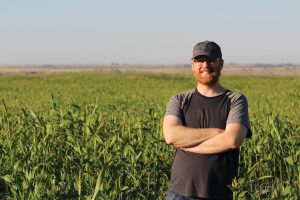
THE EARLY ADOPTERS
Of the farmers who responded, Manitoba covered the most acres (46 per cent), followed by Saskatchewan (31 per cent) and Alberta (23 per cent). Most (82 per cent) had grown cover crops prior to the 2020 growing season and 36 per cent had grown them for three to five years. Farmers with livestock (62 per cent) made up the bulk of those surveyed (29 per cent had no livestock on the farm), and 56 per cent defined themselves as annual grain growers.
The farms of respondents ranged in size from a few acres to more than 10,000, but most were between 1,000 and 1,999 acres. Only 25 per cent were certified organic on all or part of their farm, which dispels the myth that cover crops are a better fit for organic systems.
Respondents also shared information on tillage practices. The survey found 33 per cent of farmers use no-till, while 48 per cent practice minimum or reduced tillage. Farmers who plant cover crops employ air seeders (49 per cent), seed drills (37 per cent) and broadcasters (26 per cent).
Of the 281 respondents, just 20 per cent plant cover crops after fall harvest. Morrison said many farms establish their cover crops as an intercrop either at the same time as their cash crop (37 per cent) or broadcast the cover crop into their cash crop sometime during the growing season (14 per cent). Intercropping, he said, could be a solution that addresses the lack of fall moisture experienced in many parts of the Prairies.
Regenerative agriculture consultant Scott Gillespie agrees intercropping is a practice in need of exploration. “Broadcast doesn’t really work well in the Prairies unless there’s a way for you to scratch it or work it in a little bit,” he said. “It’s just too dry to be reliable enough.”
Based in southern Alberta, Gillespie helps conventional farmers move towards regenerative practices. He has developed an online cover crop course to answer some of the big questions around adoption. Gillespie suggested starting small with clear goals in mind. “You want to learn your equipment and labour and how things are going to work on your system,” he said. “You’re not trying to cover the entire farm; you’re looking for where they’re going to fit and have the best impact.”
Labour, said Gillespie, can be an obstacle to adoption, as harvest is first priority in the fall. “It’s very hard to have somebody dedicated on a seeder following the harvester around,” he said.
Mindset can also be a limiting factor, he added. “If people don’t see it as a priority, it’s going to be tough to get done.”
SEED SOURCES AND GUIDANCE
More than half of Prairie farmers purchase seed from businesses that specialize in the sale of cover crop seed. Stamp Seeds near Lethbridge is one such supplier. The seed company offers pedigreed seed, which includes 25-kilogram bags of mixed-species blends.
With novice cover crop users, the first step is to talk through their goals, said Greg Stamp, certified crop adviser and head of seed sales. Some want to reduce soil erosion, while others are focused on building soil health. He said farmers come to him with all kinds of questions. This includes how best to terminate cover crops the following season. Stamp said the answer to this specific question will depend on a variety of factors, that include which crop will follow.
“If you’re going to do this, you need to be aware of the risks, as you don’t want your cover crop to be a weed in your next season crop,” he said.
According to the Prairie Cover Crop Survey, most farmers resort to grazing (46 per cent), while the remainder rely on winterkill (37 per cent), tillage (30 per cent) and herbicides (21 per cent) to terminate their cover crop.
Termination isn’t the only obstacle that concerns early adopters. In fact, 87 per cent of survey respondents said they experienced one or more problems when they added cover crops to their system. Of this number, 30 per cent cited the short growing season as a challenge. Lack of moisture at planting (27 per cent), late harvest of cash crops (17 per cent), additional costs (25 per cent) and the impact of the cover crop on herbicide choice (21 per cent) were cited as further challenges.
Further barriers to adoption included a lack of support from agronomists (10 per cent), not knowing where to start (nine per cent), control of cover crop residue (eight per cent), opinions of other farmers (eight per cent), soil that’s too wet to plant, maintain or terminate cover crop (seven per cent) and allelopathy (six per cent).
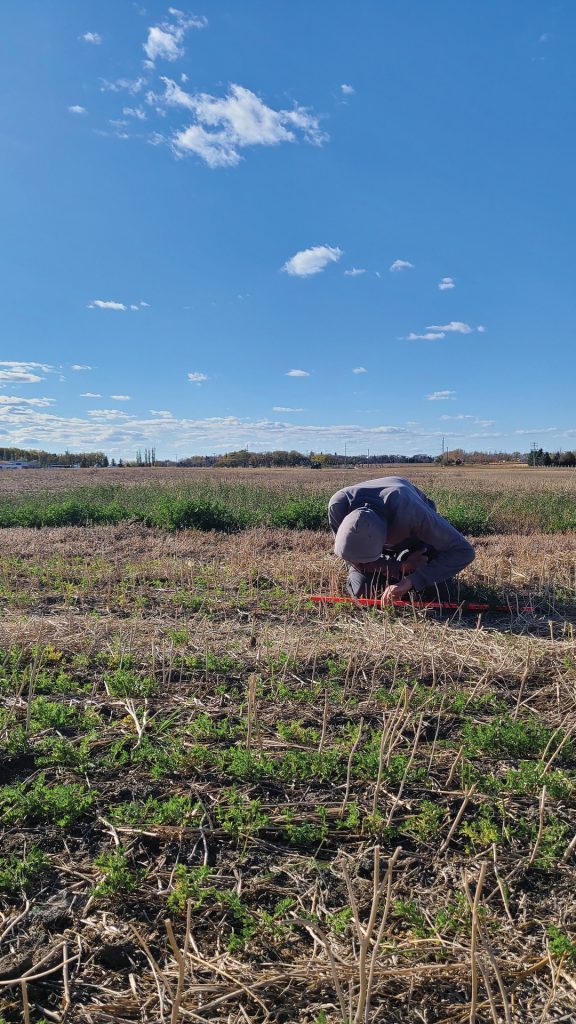
With so many challenges and questions, it’s no wonder uptake is low. Ken Coles, executive director of Farming Smarter, admitted he’s not a cover crop expert, but he is keen to learn. A non-profit, charitable group based in Lethbridge, it works closely with farmers to develop new technologies, crops and practices through small-plot and field-scale research, much of it focused on the irrigated sector.
Coles said Farming Smarter is conducting a cover crop study with funding from the Integrated Crop Agronomy Cluster. Its main objective is to determine if there is wide potential for cover crop adoption. The initiative will evaluate the reliability of cover crop establishment with annual crop rotations, look at the impact on crop yield and quality and evaluate their impact on soil health. It will also weigh costs against benefits to determine possible return on investment. “There is some knowledge out there, and there’s some potential, but how you sort through that in the various cropping systems is still sort of an unknown,” he said.
Coles doesn’t challenge the value of cover crops as a means to sequester carbon or build soil health. In recent years, he’s seen southern Alberta farmers lose serious amounts of soil to high winds. Increasing ground cover, he said, could be a workable solution. But those who have to work cover crops into their rotation have, for the most part, failed, he added.
“One of my major points from our research site was that under dryland drought conditions, cover crops are difficult to establish and may actually compete for water with the crops,” said Coles. “I’m much more optimistic under irrigation.”
Naturally, farmers have questions about rotation, costs and timing. “I think there’s a growing desire for some reputable knowledge,” said Coles. “And that’s what we’re hoping to dig into a little bit more.”
According to 81 per cent of the Crop Survey respondents, though, the benefits are irrefutable. Of the 281 respondents, 68 per cent saw improved soil health, 48 per cent saw increased biodiversity by boosting the populations of pollinators, beneficial insects, birds and earthworms, and 46 per cent saw increased soil organic matter. In fact, not a single farmer surveyed reported their old system worked better. But as Coles pointed out, the survey is likely not representative of the average Prairie farmer. According to Morrison, though, the survey served its purpose; that is, it helped determine what Prairie farmers are doing with respect to cover crops and where they need help.
“Our major goal is just to provide information to farmers, from farmers,” he said. “It allows us to identify areas we may need to research.”
SUCCESS STORIES
Hailing from Alberta and Saskatchewan, six farmers who employ cover crops shared their goals, successes and challenges with GrainsWest. They also shared their contact details and offered to connect with fellow farmers who have questions about adoption of cover crops in their region.
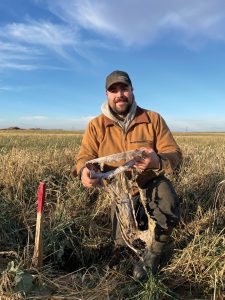
Paul Kernaleguen
Location: Birch Hills
Farm description: Dairy, some beef cattle, crops for feed
Farm size: 640 acres (550 seeded)
In cover crops since: 2013
Contact: @kattlesquared (Facebook and Twitter)
Kernaleguen admitted he got into cover crops out of necessity. In 2011, his land received 30 inches of rainfall. It was like “farming islands.” Since adding cover crops to his system, he has gone from farming 125 acres of soggy land to farming the full 550 acres. Soil organic matter has improved considerably as well.
For best success, it’s important to find guidance, he said. He works close with Kevin Elmy, who has helped him choose a mix of species that best addresses his unique challenges.
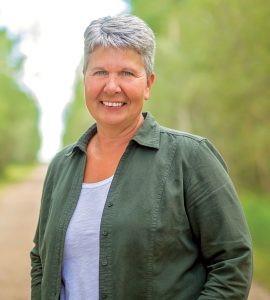
Nora Paulovich
Location: Manning
Farm description: Mixed farm with cow-calf operation and cereal crops, oilseeds, pulses and forage seed crops
Farm size: 800 acres
Growing cover crops since: 2013
Contact: jclcfarms@gmail.com
Paulovich wanted to improve soil health and complement perennial pastures in her farm’s grazing program. To reduce soil compaction, improve water infiltration and extend the grazing season were also targets. The challenge was to find species suited to a short growing season. She and her family use a 10-species mix that includes cool- and warm-season annual grasses, broadleaf species and sweet clover, a biennial legume.
Marty Lawrence
Location: Stettler
Farm description: 550 beef cattle and crops
Farm size: 5,760 acres
Growing cover crops since: 2019
Contact: martywlawrence@gmail.com
Lawrence implemented cover crops to improve soil health and boost soil biology. Under the guidance of Kevin Elmy of Cover Crop Canada, a consultancy based in Olds, and Imperial Seed, Lawrence chose a 14- to 16-species blend with oats, barley and peas. While he started on 50 acres, he has since expanded to 500 and has seen improved leaf disease management, increased crop resilience, especially in drought-like conditions and improved cattle health.
He spends many hours online watching YouTube videos on soil health and grazing. The key to success, he said, is having the right mindset. “The biggest issue is in your head.”
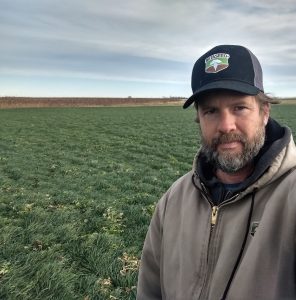
Brady Valgardson
Location: Taber
Farm description: Malt barley, spring wheat, row crops, vegetables and sugar beets
Farm size: 2,300 acres, mainly irrigated with 250 acres of dryland
In cover crops since: 2011
Contact: bradyvalgardson@hotmail.com
Valgardson added cover crops to his rotation to control erosion. His goals include improved carbon sequestration, nutrient cycling, water infiltration and water-holding capacity. He faced challenges that included allelopathy, a lack of moisture in spring, termination troubles and additional labour and cost. He has also seen great results. “They for sure work for protecting soil from wind erosion, so that’s worth it right there,” he said.
It’s important to choose the right crop for the task. Be sure to plan rotations and figure out how you’re going to terminate the cover crop beforehand, he suggested. He recommends reading magazines, watching YouTube videos and consulting with seed suppliers, specialists and other early adopters.

Calvin Gavelin
Location: McCord, SK.
Farm description: Mixed cow-calf operation (200 head) and crops, including durum wheat, flax, peas and lentils
Farm size: 3,840 acres of which 2,000 are seeded annually
Growing cover crops since: 2017
Contact: gavelin.farms@yourlink.ca
When Gavelin added cover crops to his management system, his aim was to improve soil health, fix nitrogen and improve cattle health. While seed cost is high ($37.50/ac), he’s seen improvements to his soil, in cattle health and pest management. He is concerned, though, that cover crops are not covered for losses or damage under traditional crop insurance, which he considers a potential barrier to adoption.
Gavelin also worked with Kevin Elmy, who helped him select the right mix of species to meet his goals. He warns new adoptees to double check seeding depth. “Tiny seeds can’t push dirt,” he said.
Harold Perry
Location: Taber
Farm description: Mostly potatoes (1,500 acres) and grains, including spring wheat, winter wheat, peas, canola, silage corn for neighbouring feedlot
Farm size: 5,000 irrigated acres
In cover crops since: 2009
Contact: haroldperry4444@gmail.com
When Perry decided to add cover crops to his rotation, he did so to minimize soil erosion. His focus shifted to sequester carbon, increase soil biology, improve nutrient cycling and build soil organic matter. Using multi-species mixes in a variety of ways produced plenty of benefits. Pest and disease control have improved, and soil erosion due to wind, which is a huge problem in his region, has been greatly reduced. He’s also seen improved water-holding capacity.
He warns implementation of cover crops takes time, money and extra manpower. “We’re passionate and we’re trying to improve soil health, so we’re happy to do this,” he said.




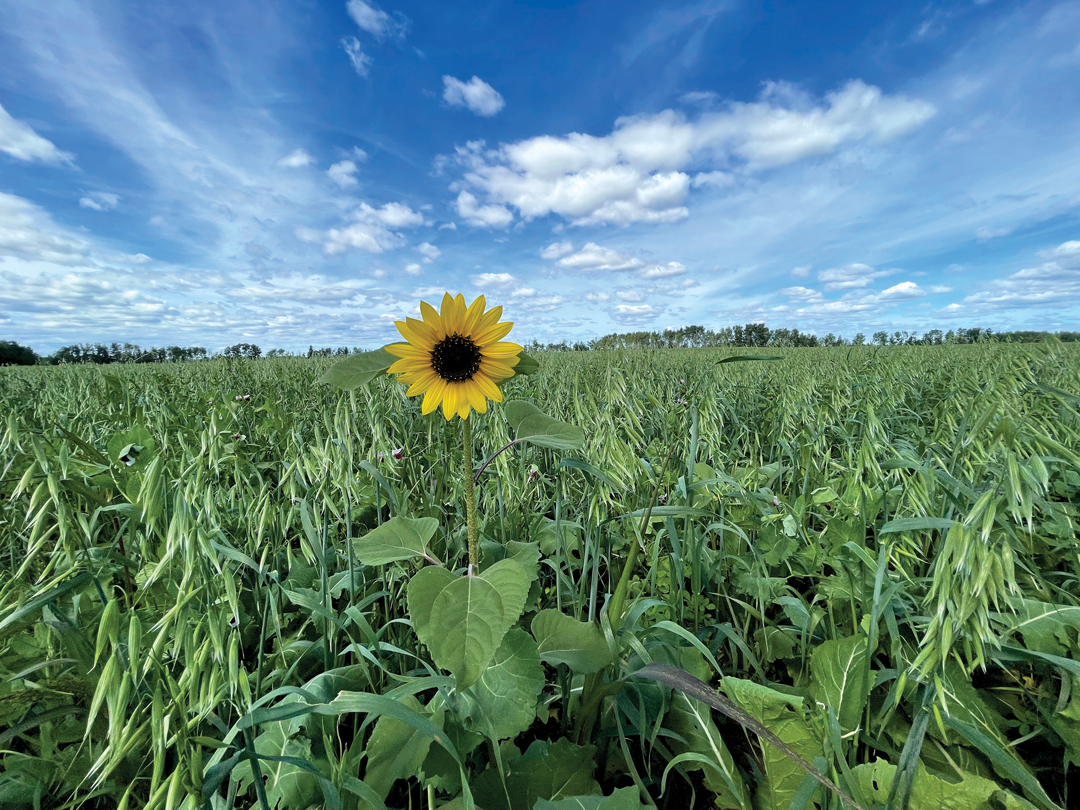
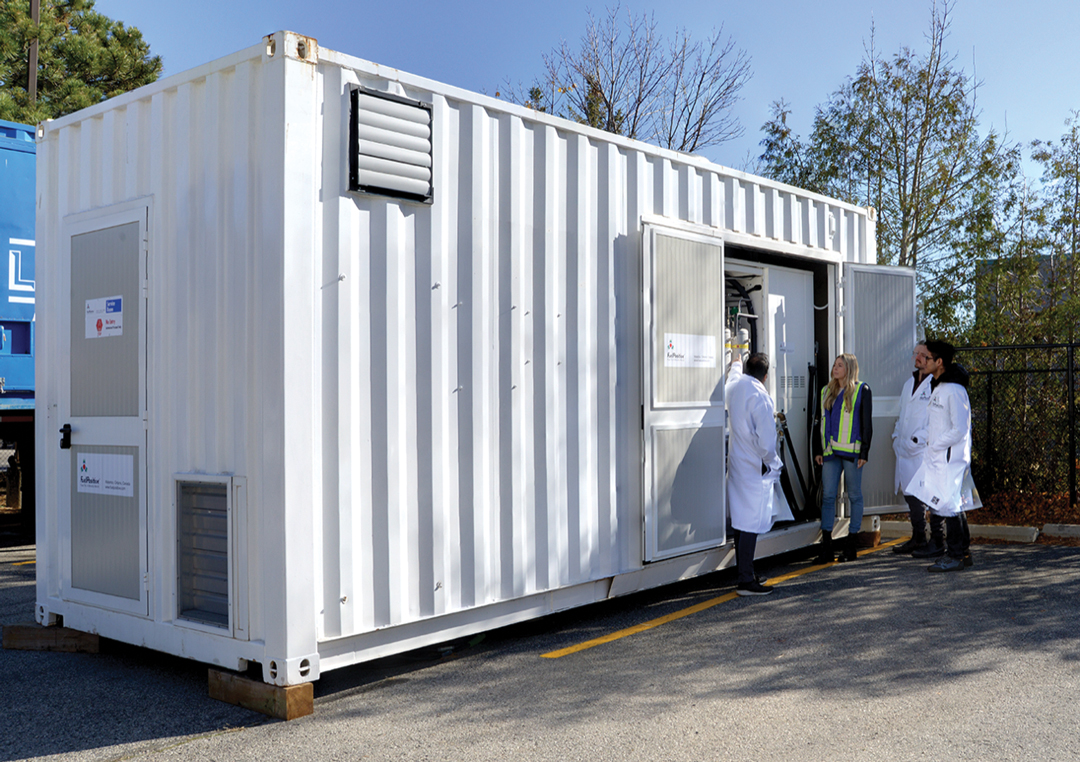

Comments